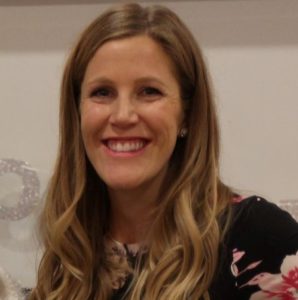The Post Secondary Planning Process: Managing the Stress
March 19, 2019
This post is part of a series about helping students with LBLD experience academic success.
Read the other posts by the Landmark High School Guidance Department:
by Kerri Coen
Search, apply, wait, decide. It is no surprise that the post-secondary process can be extremely stressful for all high school students. For students with learning disabilities, this process can be especially daunting. Throughout this post, we will discuss the reasons why searching, applying, waiting, and deciding can be anxiety-provoking for students with learning disabilities and provide tips to support students through this trying time.
Students with learning disabilities often have a variety of areas in which they struggle; reading, writing, executive function, test taking, and/or a comorbid diagnosis such as anxiety or mood disorders. These challenges coupled with a process that is meant to analyze students in their areas of weakness can add a layer of stress. Specifically, students with learning disabilities may find the following aspects of the post secondary process particularly stressful:
- Searching: students are not only looking for schools that have the right major, are the perfect size, are located in a “cool” location, they are also looking at tutoring, writing centers, math labs, student success coaches, accommodations, counseling resources, etc.
- Applying: As with the searching process, students may have to apply to an additional specific comprehensive support programs for students with learning disabilities. Applying to these programs often includes extra essays and deadlines that have to be tracked and monitored. Also, the application process will vary from school to school, and there is no uniform process to apply. All of these elements combined make this process even harder to manage.
- Application of Executive Function Skills: Applying to a post-secondary placement calls on all the executive functions. Students must to track deadlines, manage their time, respond in a timely manner to admissions representative emails, and schedule meetings with a guidance counselor for help. For students with learning disabilities, these tasks often fall under areas of weakness. If they are unable to follow all the steps and stay on task, the process of applying can quickly become overwhelming.
- Test Taking: Although standardized tests are typically stress-provoking for all students, they can be particularly so for student with learning disabilities. Students with LD often shine in their day-to-day hard work, but can often struggle with these types of tests. Also, the thought of one test determining where they go after high school is highly stressful for a student who self-identifies as a poor test-taker. Oftentimes, by focusing on the importance of these high stakes tests (without meaning to), adults in students lives can also add to this stressor.
- Essay Writing: It is inevitable that students will have to write at least one self-reflective essay in this process. While students with learning disabilities are more than capable of writing these types of essays, it can be a time-consuming task. Students must map out appropriate time and support in order to complete a meaningful and well-written essay that demonstrates who they are as a person and a learner. Additionally, for students who struggle with test-taking, the essay also becomes an even larger piece of the puzzle, as admission representatives can look more closely at the essay all to get a clearer picture of the student.
- Being Successful: Many students with learning disabilities have the perception that others think they will not be successful after high school. This comes from negative experiences early on in their education where they may not have felt supported. Students often doubt that they will be successful and are uneasy about their transition from high school to postsecondary education.
While this is a daunting list of reasons why the post-secondary process can be especially stressful for a student with a learning disability, many students can not only manage and navigate the process successfully, but end up feeling encouraged and empowered for the next steps in their education. Below are some ways that Landmark has worked to empower students in figuring out what comes next:
- Educate students and support options other than college, letting students know that no matter what they choose after high school, they will be supported and can be successful.
- Provide explicit information about how much support students can get in college and the differences in the law pertaining to students with disabilities after high school.
- Give the gift of time! These students often need individualized attention to help them navigate and understand the process. Teach students how to do things independently, such as research schools and create lists of important questions to ask.
- Create graphic organizers for the search and application process.
- Promote and celebrate these positive moments, even if they may seem small. When students are accepted into schools, it is a very big deal to them.
- Allow students a voice to express their emotions about the process. In the past, Landmark’s guidance and counseling departments have worked together to give students a small group forum to discuss the difficulties they have experienced in the post-secondary process. It has allowed students to process their frustrations in a positive way.
- Be preventative as opposed to reactive when planning for the transition …
- Help the student become more in tune with who they are as a learner and identify their areas of strength and weakness by looking over their updated testing. This will prepare them to be an advocate for themselves later on.
- Provide struggling students with extra emotional support throughout the transition to college. Work to help them set up counseling either on campus or nearby before getting to college
- Also remember that, as a member of the student’s support network, it is important to manage your own stress and anxieties. This process can be trying to students, parents, and professionals alike. Your approach and behavior around this transition will be modeled by the student you are supporting.
No matter how much time and effort is put into supporting students through the post-secondary process, it is always going to be a stressor and cause for some anxiety. While we tend to want to remove all stress from our students’ lives, this is a normal and essential stress for young adults as they take on new challenges and become more independent: from discomfort comes growth. If we can work to help students navigate the transition to life after high school with more knowledge and independence, they will see that they are capable of persevering through challenging times and coming out successful.


